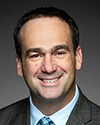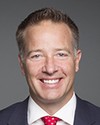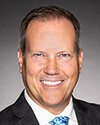I have 30 seconds left.
What recommendation can we make through our report that would encourage that type of environment?
Evidence of meeting #112 for National Defence in the 42nd Parliament, 1st Session. (The original version is on Parliament’s site, as are the minutes.) The winning word was women.
A recording is available from Parliament.
11:45 a.m.
Liberal

Mark Gerretsen Liberal Kingston and the Islands, ON
I have 30 seconds left.
What recommendation can we make through our report that would encourage that type of environment?
11:45 a.m.
Professor, Canadian Forces College, As an Individual
My recommendation would be more of the concept of first among equally qualified.
If you have 1,000 applicants, don't rank them from number one to number 1,000; put them into groups. Here is the group of 250 who are excellent, here is the group of 250 who would do well, and down at the bottom, here is the group of 250 who should find another line of work. Once you have them grouped equally, then you can set your priorities. You can decide who you would like to give the offers to first among the equally qualified candidates.
11:45 a.m.
Liberal

The Chair Liberal Stephen Fuhr
We're going to move to five-minute questions now, and the first one is going to MP Fisher.
11:45 a.m.
Liberal

Darren Fisher Liberal Dartmouth—Cole Harbour, NS
Thank you very much, Mr. Chair.
Thanks, folks, for being here.
Professor Scoppio, through Strong, Secure, Engaged, as you are well aware, we have plans to spend an increased amount of money on our defence, and with that increased spending, part of the plan is for increased personnel. Would you feel there would be a direct correlation with that increased spending, possibly through our action plans and our diversity strategies, to increase those diverse roles with increased spending?
11:50 a.m.
Professor, Canadian Forces College, As an Individual
I would suggest the next level of analysis below that is the increased capabilities that the CAF is going to be able to generate as a result of those people. Particularly what I am talking about is that if the expansion is in areas of occupations that do not already have numbers of women serving in them, the increase in the numbers is not going to make much of a difference.
It's recognized, for example, that the numbers of women are there in terms of 14% to 15%, but they tend to be concentrated in a smaller number of occupations. If those particular occupations are not growing, then it's not going to automatically lead to changes, so it would need more proactive policy to use the increase in overall numbers to achieve increased representation.
11:50 a.m.
Professor, Dean of Continuing Studies, Royal Military College of Canada, As an Individual
When we're looking at first choice for women, we see a lot of times these are support-related occupations. Other occupations are air operations, which is number one for men as well. Interestingly, sea operations are also there.
Keeping that in mind, for example, one of the challenges at the military college is that they are recruiting within a certain number of occupations. Once those female-friendly occupation billets are filled, then all they have are the other ones, so what Dr. Okros is saying is exactly right.
It's all driven by the SSEP, the Strong, Secure, Engaged policy, and part of the issue is the number of occupations that are available that are also friendly towards women, that appeal to women.
11:50 a.m.
Liberal

Darren Fisher Liberal Dartmouth—Cole Harbour, NS
Who is out there doing very well on this? What countries can we look at to see what their diversity policies are doing?
11:50 a.m.
Professor, Dean of Continuing Studies, Royal Military College of Canada, As an Individual
As I said, I think among our allies, in terms of indigenous populations, New Zealand definitely has a lot of best practices.
In the States, again, they have opened most of their occupations to people who are not citizens, so that would open the door to a lot of visible minorities. They are also doing better overall in terms of female representation.
11:50 a.m.
Liberal
11:50 a.m.
Professor, Dean of Continuing Studies, Royal Military College of Canada, As an Individual
The States, despite the fact that they only recently—I believe it was in 2016—opened all the combat occupations to women as well.... We opened them in the eighties.
11:50 a.m.
Liberal

Darren Fisher Liberal Dartmouth—Cole Harbour, NS
If our target is to get to 25%, what is the U.S. target?
11:50 a.m.
Professor, Dean of Continuing Studies, Royal Military College of Canada, As an Individual
I don't know, sir. I'm sorry. I'm not sure.
11:50 a.m.
Professor, Canadian Forces College, As an Individual
I have two comments. The United States doesn't have targets.
The other comment I would make is that I do close work with NATO committees, including the NATO Committee on Gender Perspectives. NATO nations are looking to Canada. To answer your question of who is doing the best, who is doing the most, NATO countries are looking at Canada.
Part of the issue with this is because of the breadth of the understanding of diversity. Yes, there are some countries that have focused fairly specifically on an increased number of women. As Dr. Scoppio said, New Zealand, with the Maori population, has focused specifically there, but in terms of the breadth of the diversity of Canadian society and the efforts to try to represent that internally within the Canadian Armed Forces, there is no other NATO country that is attempting to achieve what we are trying to achieve.
11:50 a.m.
Richard Martel Chicoutimi—Le Fjord, CPC
Hello. My questions will be in French.
From what I can see, there is a significant gender gap between non-commissioned officers and officers in the Canadian Armed Forces.
Is it easier to recruit women for officer roles?
11:50 a.m.
Professor, Dean of Continuing Studies, Royal Military College of Canada, As an Individual
I think there is a higher percentage of women among officers. It also depends on the department. As I recall, there are more women in the air force.
It also varies by trade. Logistics is a huge branch, and it includes many trades.
within logistics, within support. Then there are the health-related occupations.
These trades attract a lot of women.
11:55 a.m.
Professor, Canadian Forces College, As an Individual
The other quick observation I'd make there is that there are broader initiatives going across Canadian society, particularly with regard to women in what's referred to as STEM—science, technology, engineering and mathematics. There are a lot of organizations that are looking at this.
One of the challenges there is that the women who are interested in those kinds of areas of employment at the present time tend to have a lot of opportunities. I think the military is looking at some of the STEM initiatives that some universities are applying to determine what can be done, particularly for officers, given the requirement for university degrees.
11:55 a.m.
Chicoutimi—Le Fjord, CPC
Do you think the 25% target for the recruitment of women and increasing the ratio by 1% per year are appropriate? Will we get there some day? Do you think that is too ambitious in the current context? Could the target you are proposing undermine recruitment in general?
11:55 a.m.
Professor, Dean of Continuing Studies, Royal Military College of Canada, As an Individual
Our goal is to attract women, as I said earlier. In 2016, the forces were 14.4% women, and in 2017, it was 15.7%. So we can get there; I think it is possible. On the other hand, we cannot leave it up to the recruitment offices alone. We also have to use the media, to reach young people in particular.
Recently, we were at the recruitment centre in Borden, the base. They had one or two social media resource people. We recruit thousands of people every year, but we have just two social media resource people. If you have children, as I do, you know that
that's what they do. Social media is advertising.
We also have to appeal to young people to recruit them. We cannot have this 1% target and think that
they will just come to our doors.
That won't happen.
11:55 a.m.
Professor, Canadian Forces College, As an Individual
The 1% per year sends signals both internally and externally. I think it sends a very strong signal to Canadian society in terms of the intent of the military. I think that does cause some young people to reconsider whether the military is the place they want to go. Some, particularly young women, may not have considered the military, but, if they know that they're serious about this, maybe they'll consider it.
It also sends signals internally. As I said, when it comes to things like selection decisions, and you're picking among equally qualified individuals, the leadership has sent a very strong signal, so I think it does set the conditions for the numbers to increase.
11:55 a.m.
Chicoutimi—Le Fjord, CPC
I do understand what you are saying, but my fear is that these targets will hamper broader recruitment efforts.